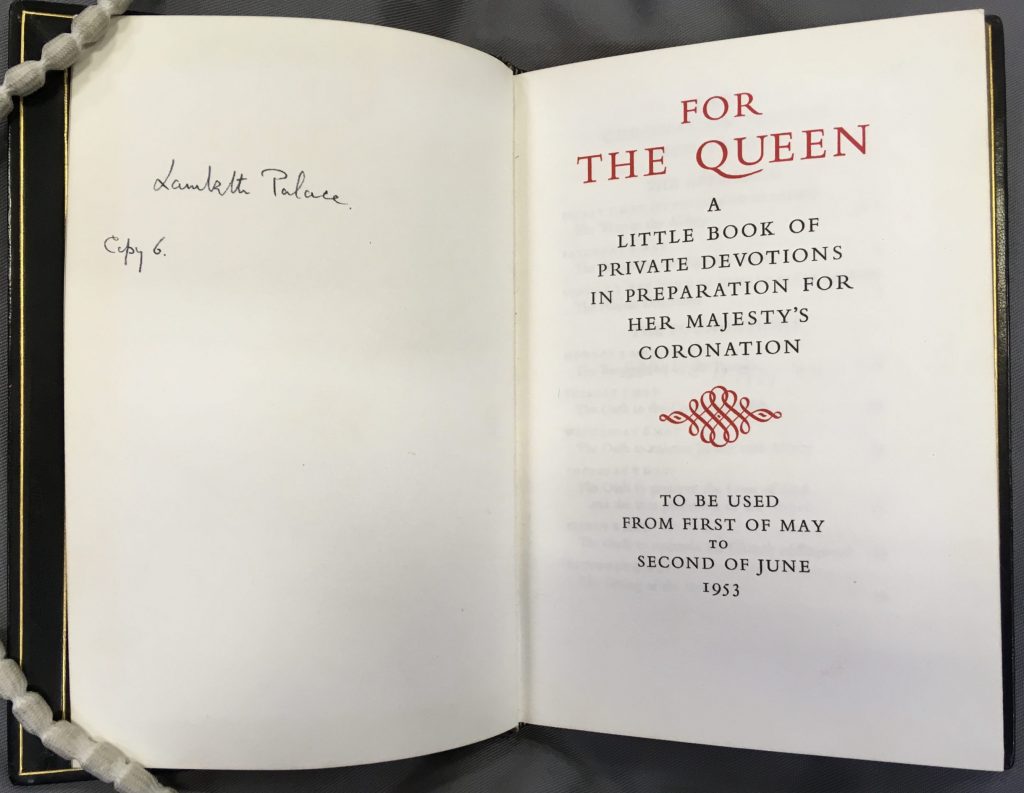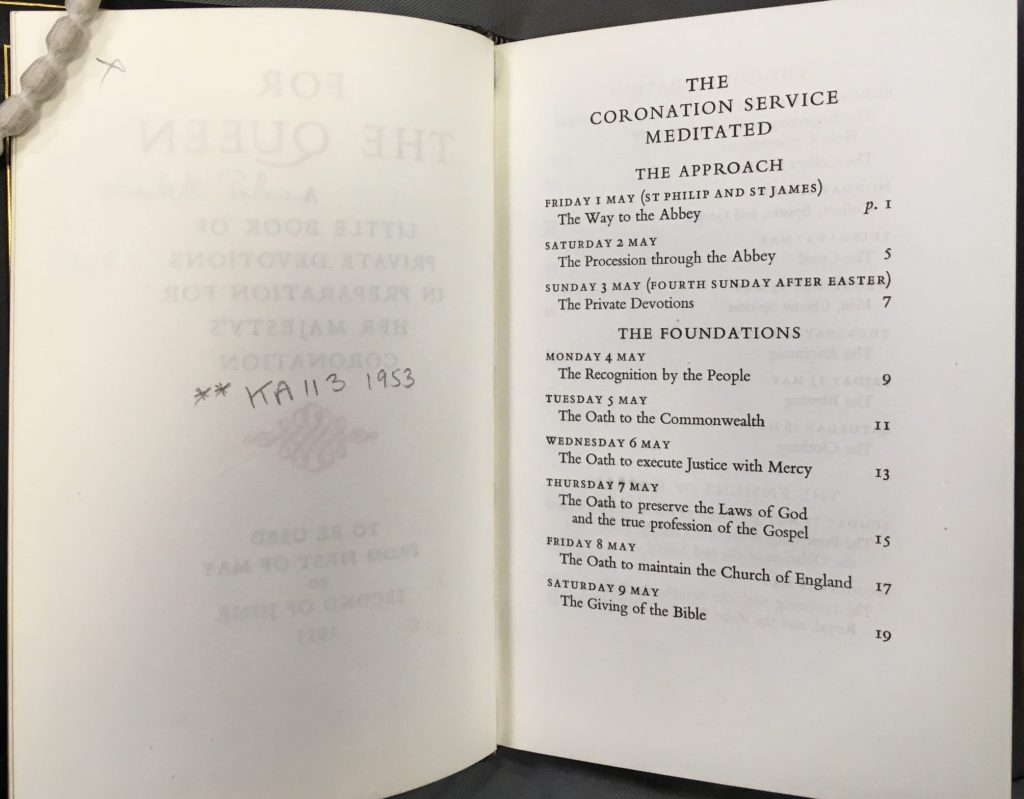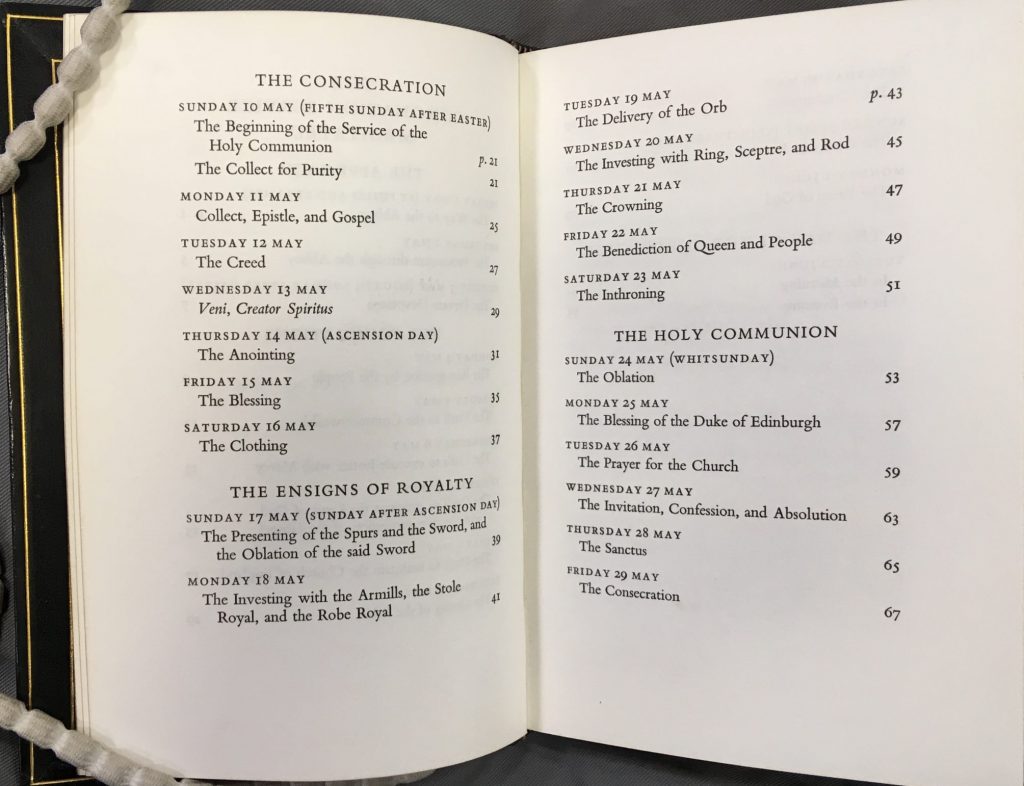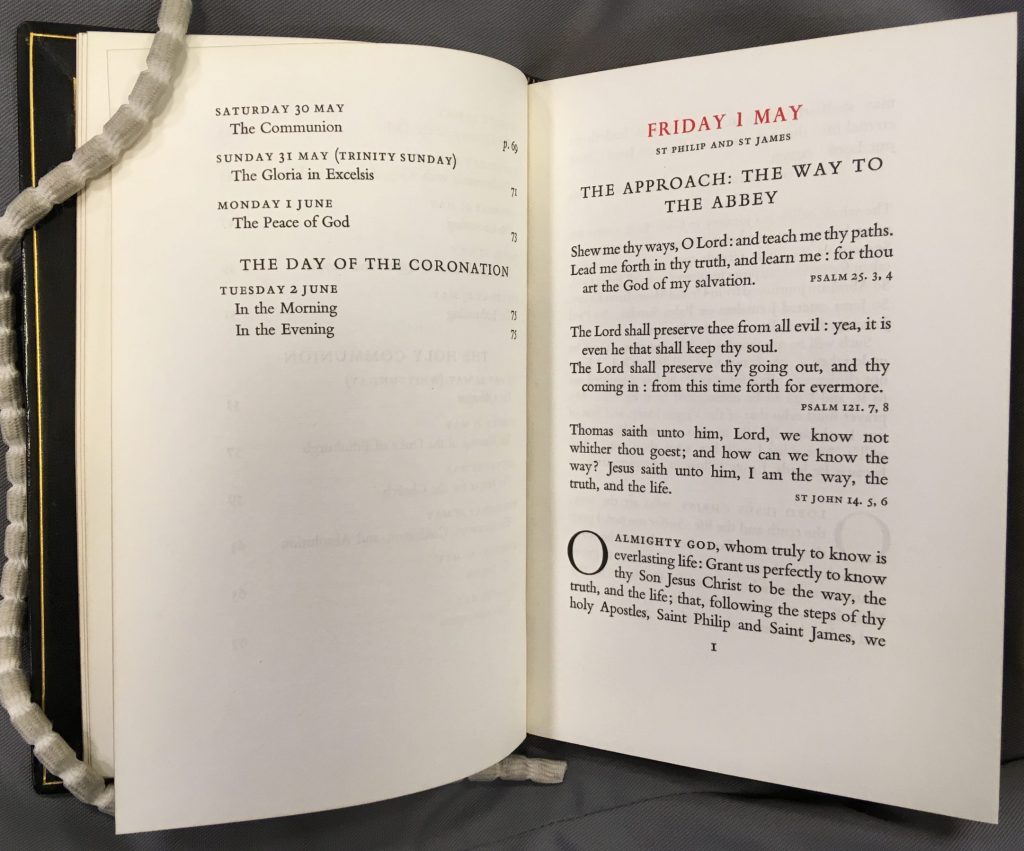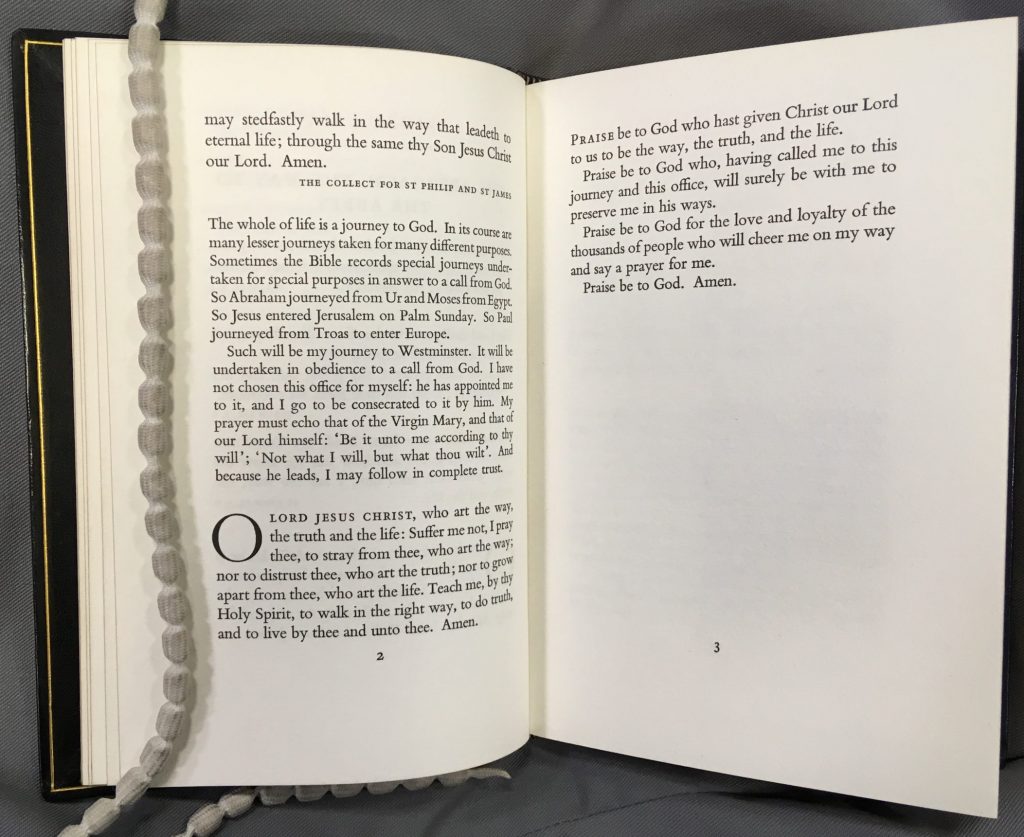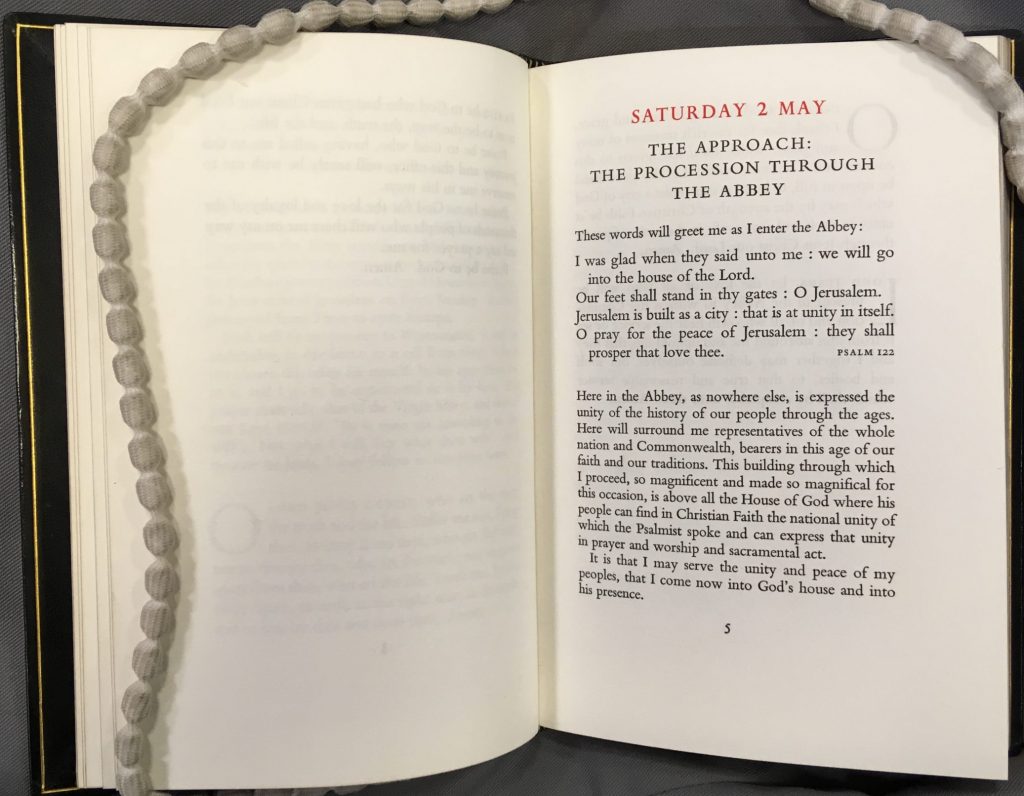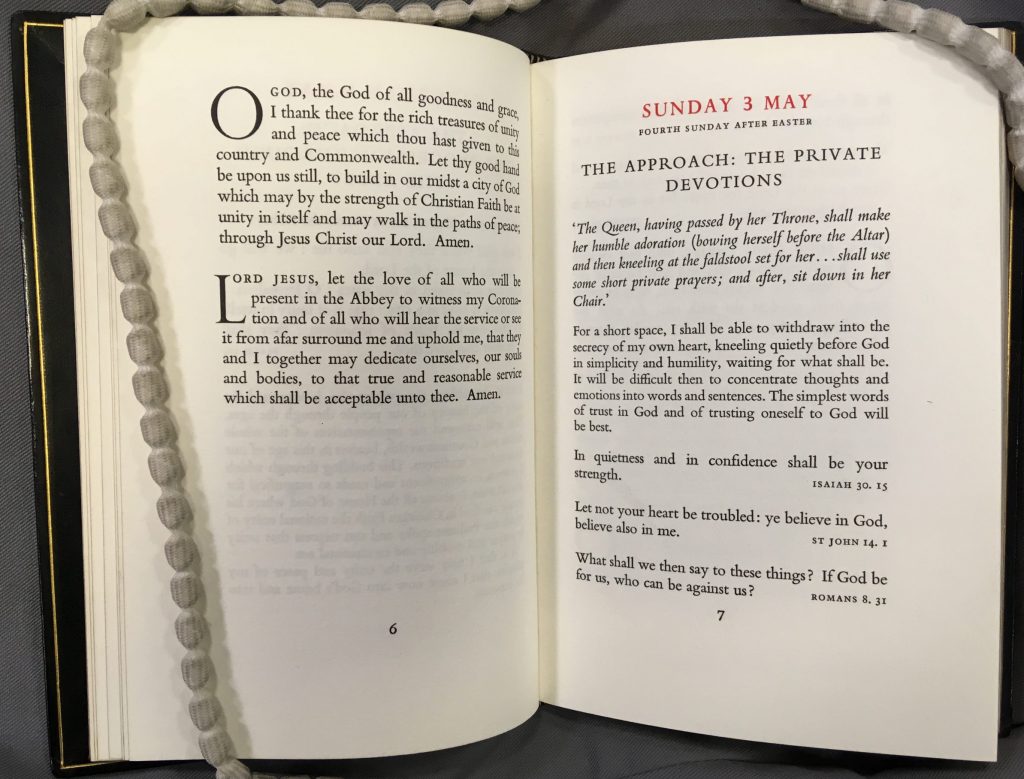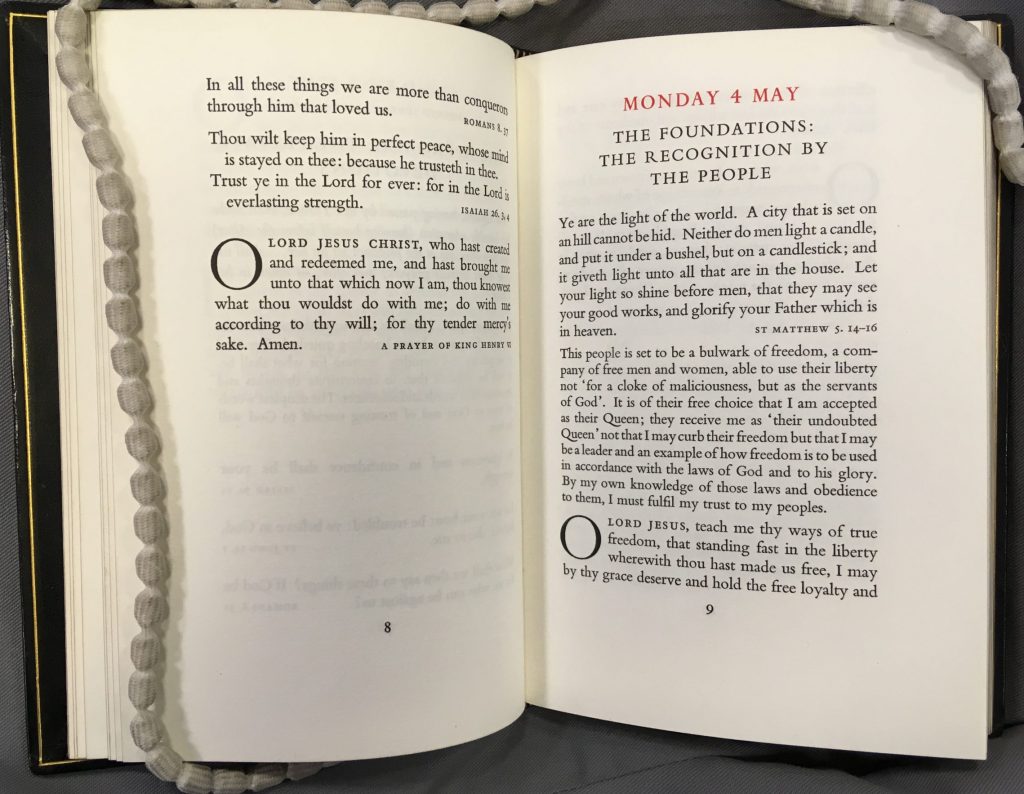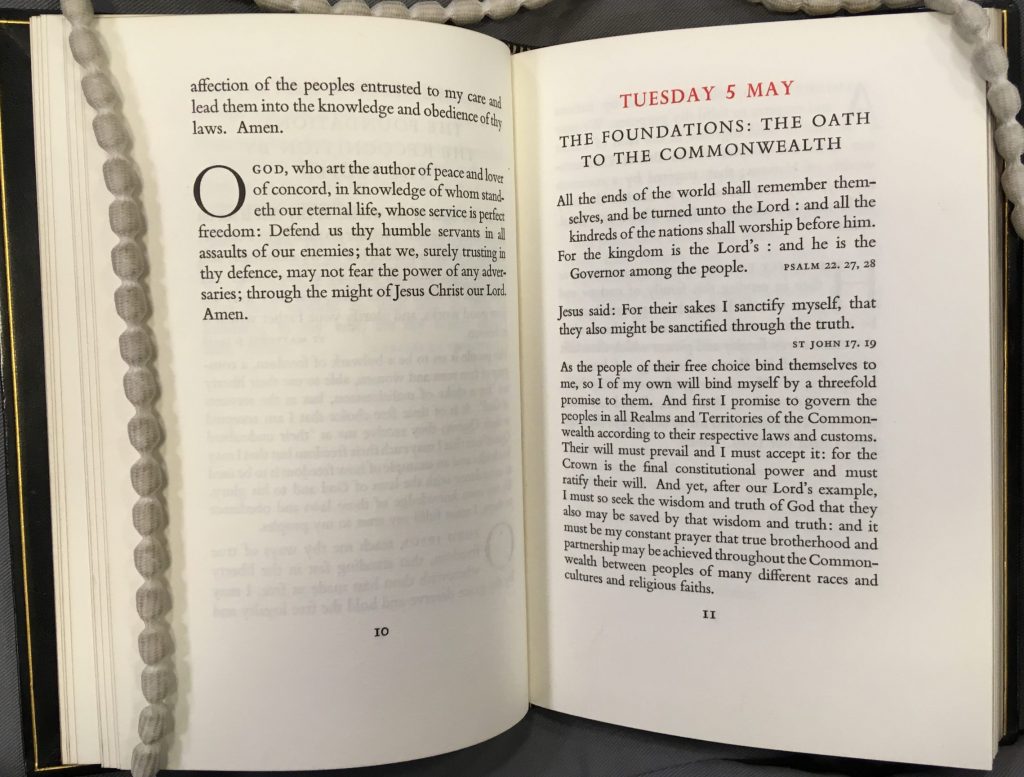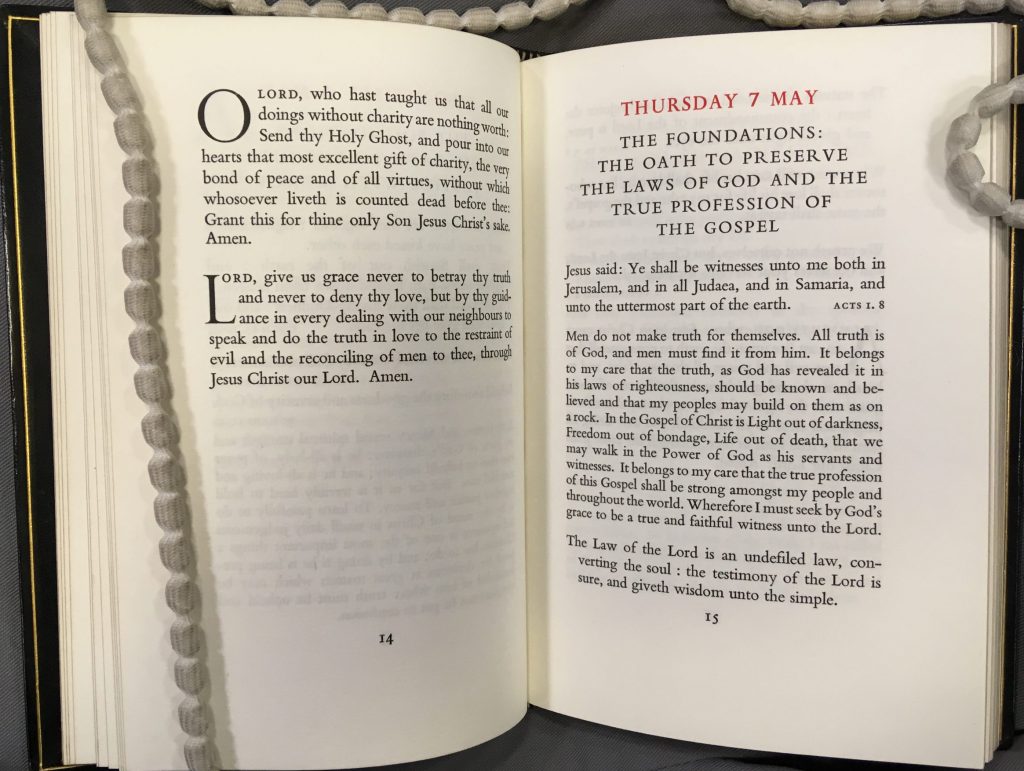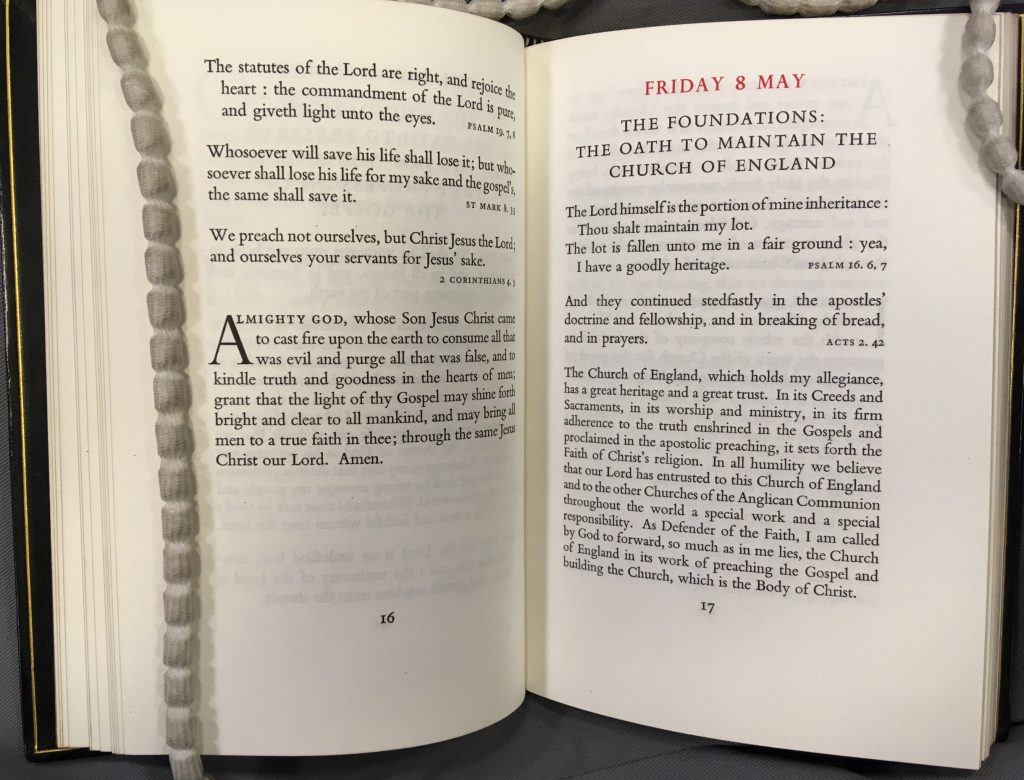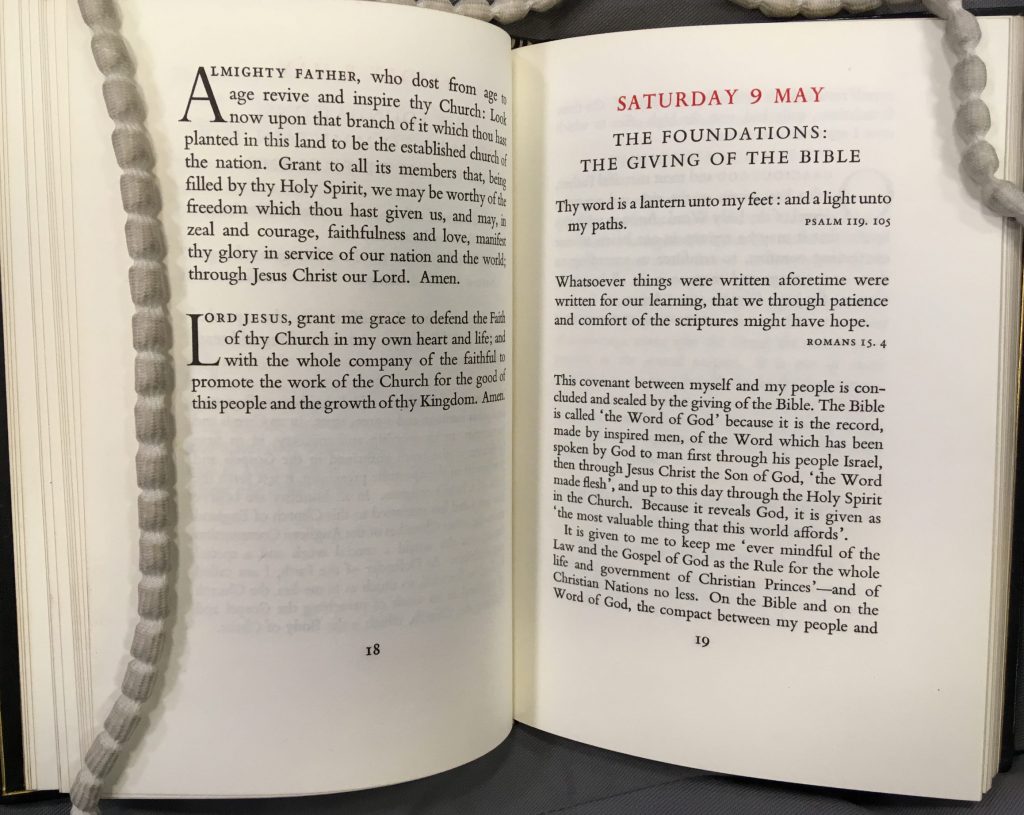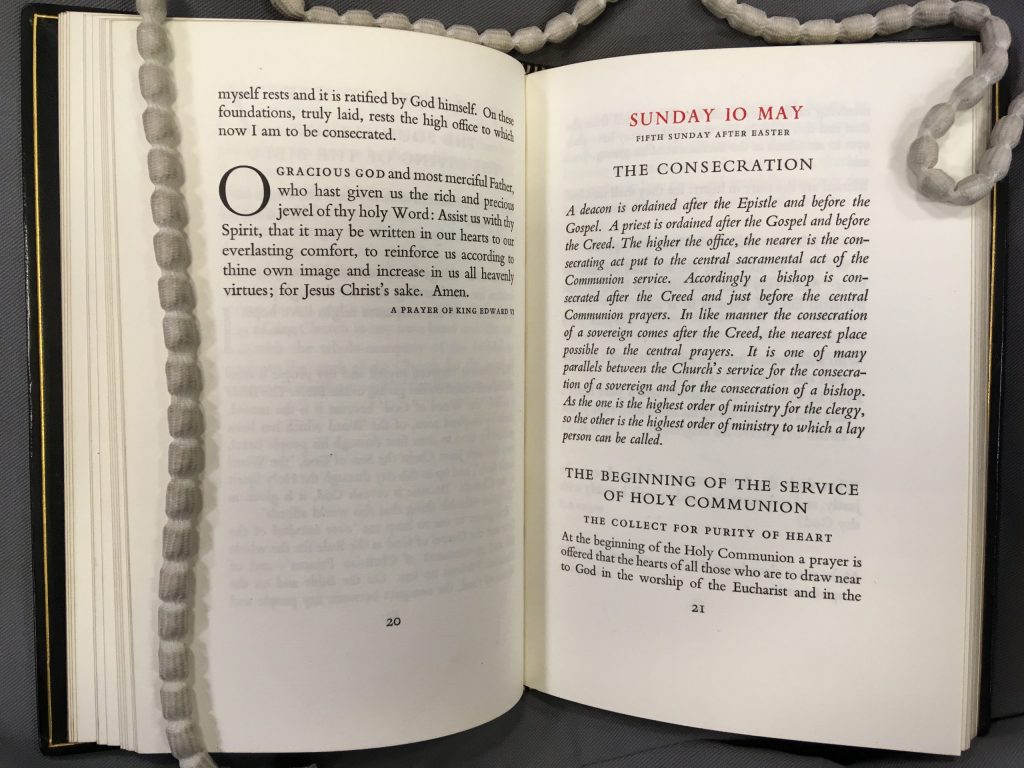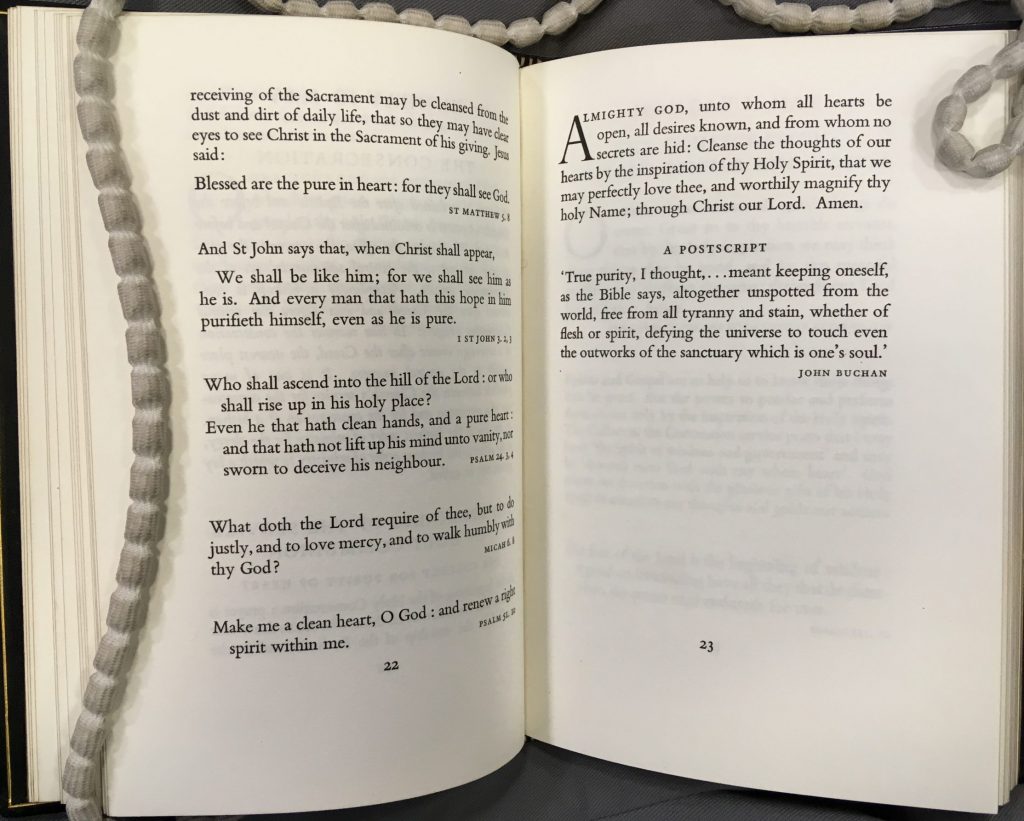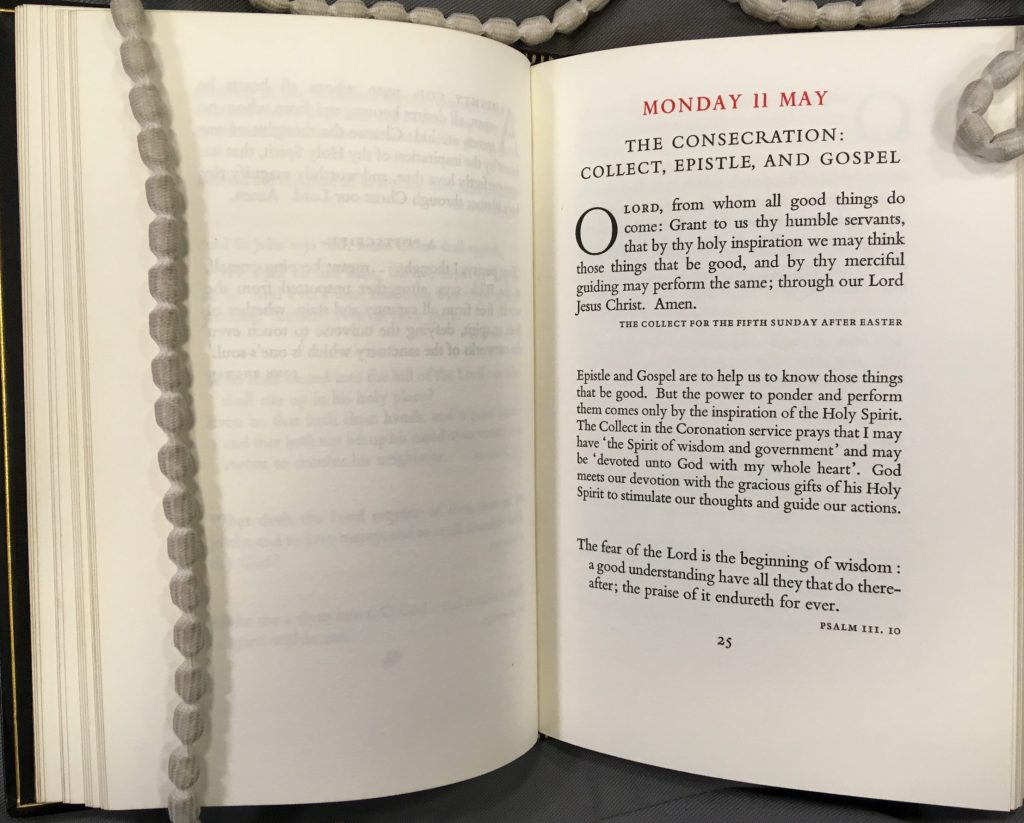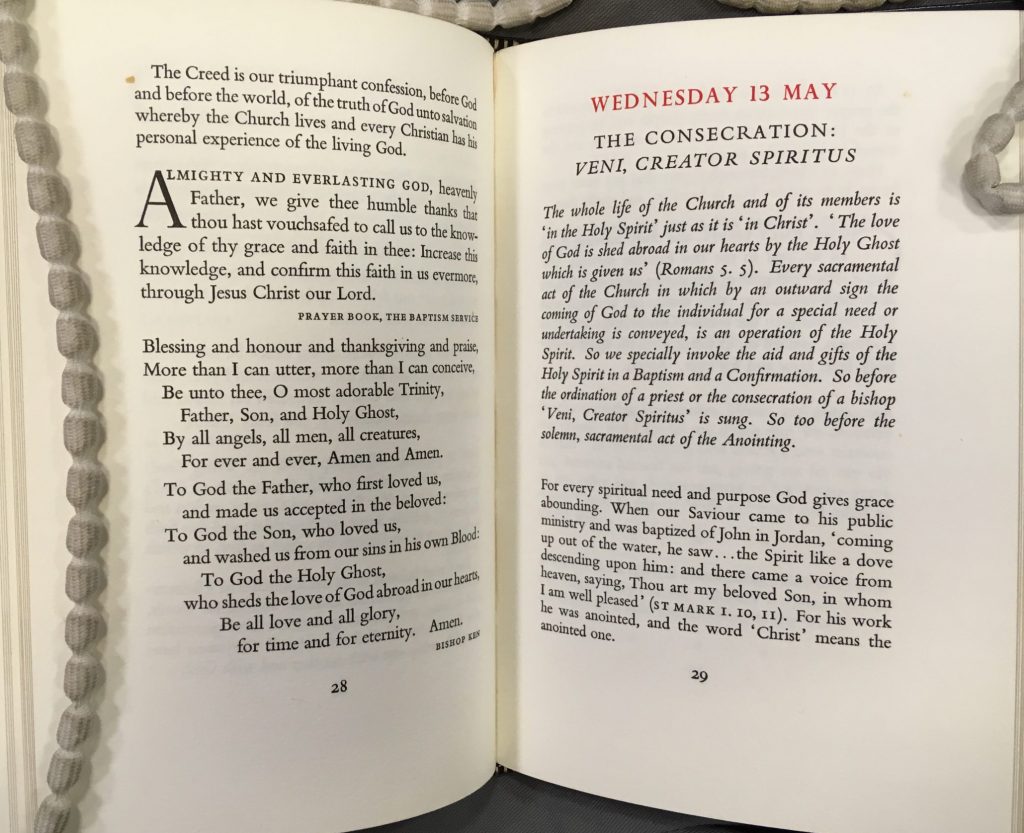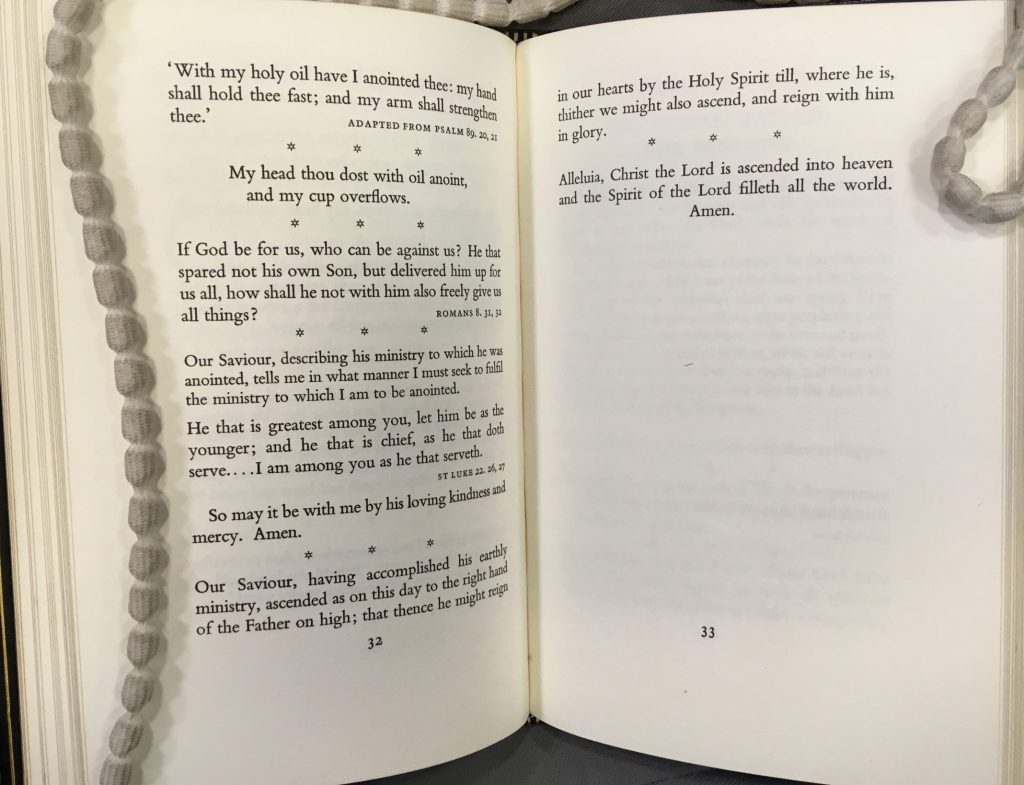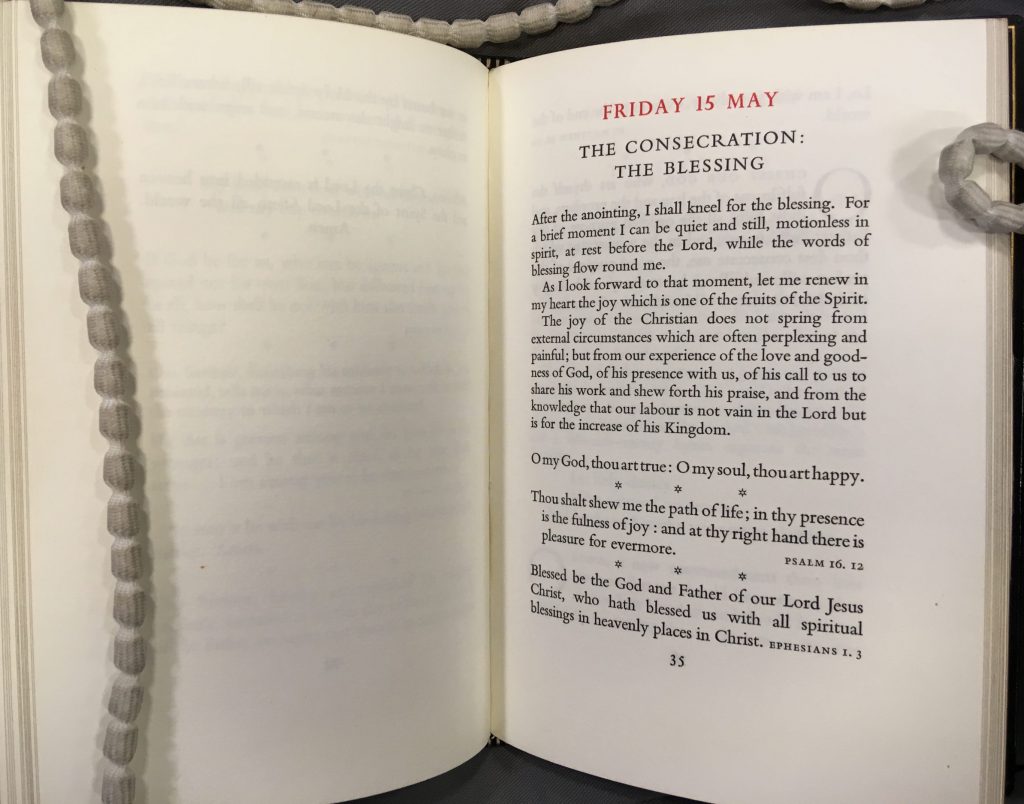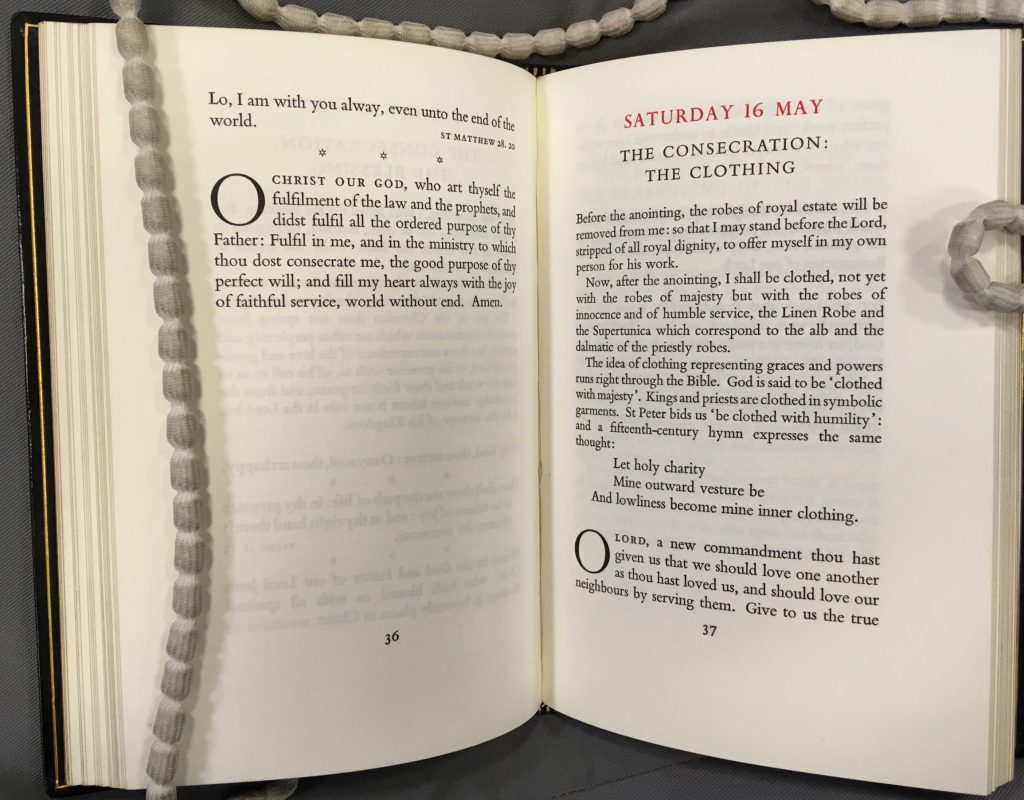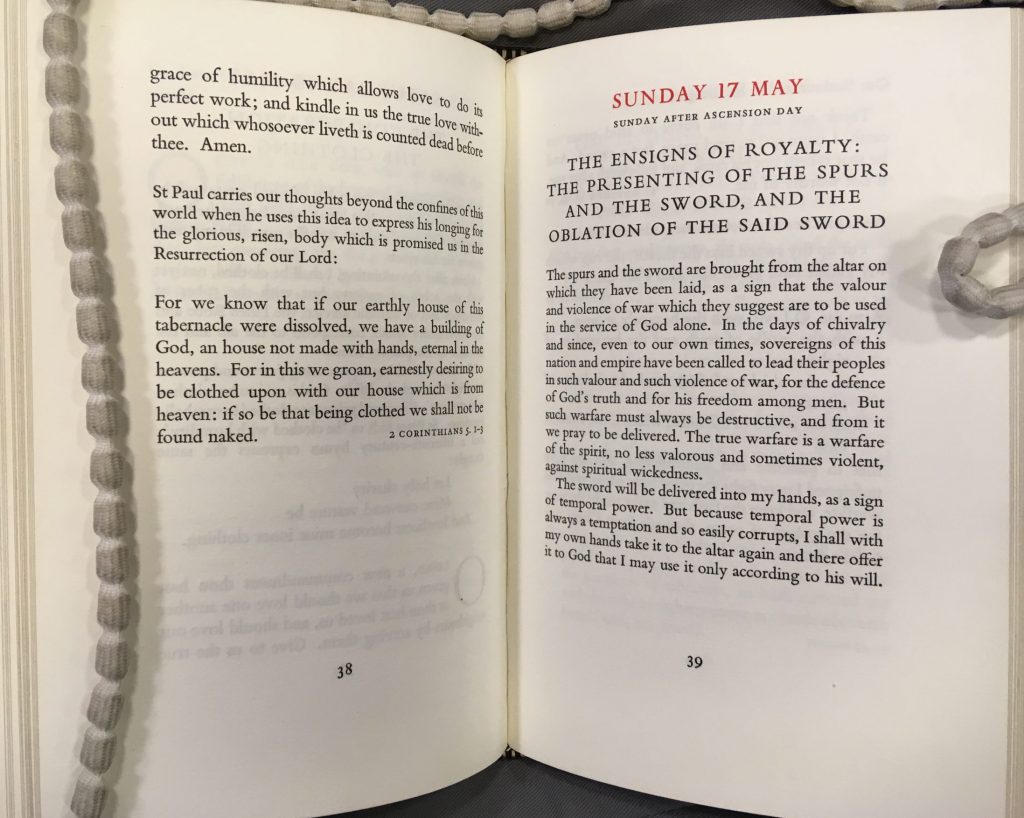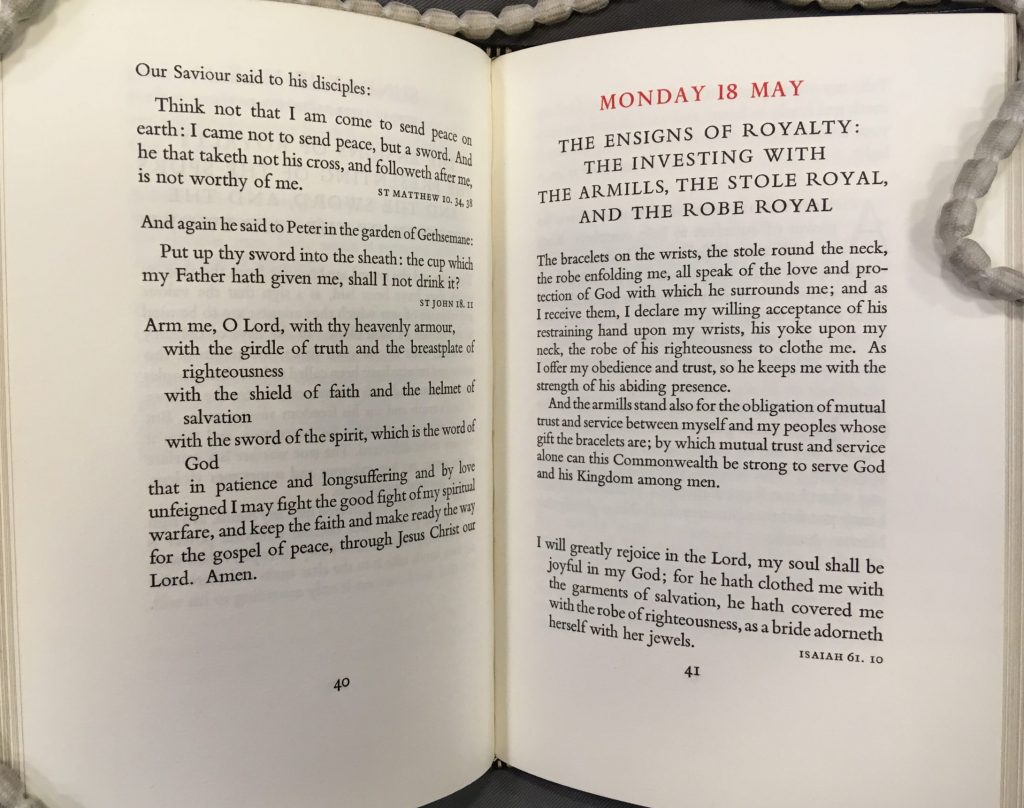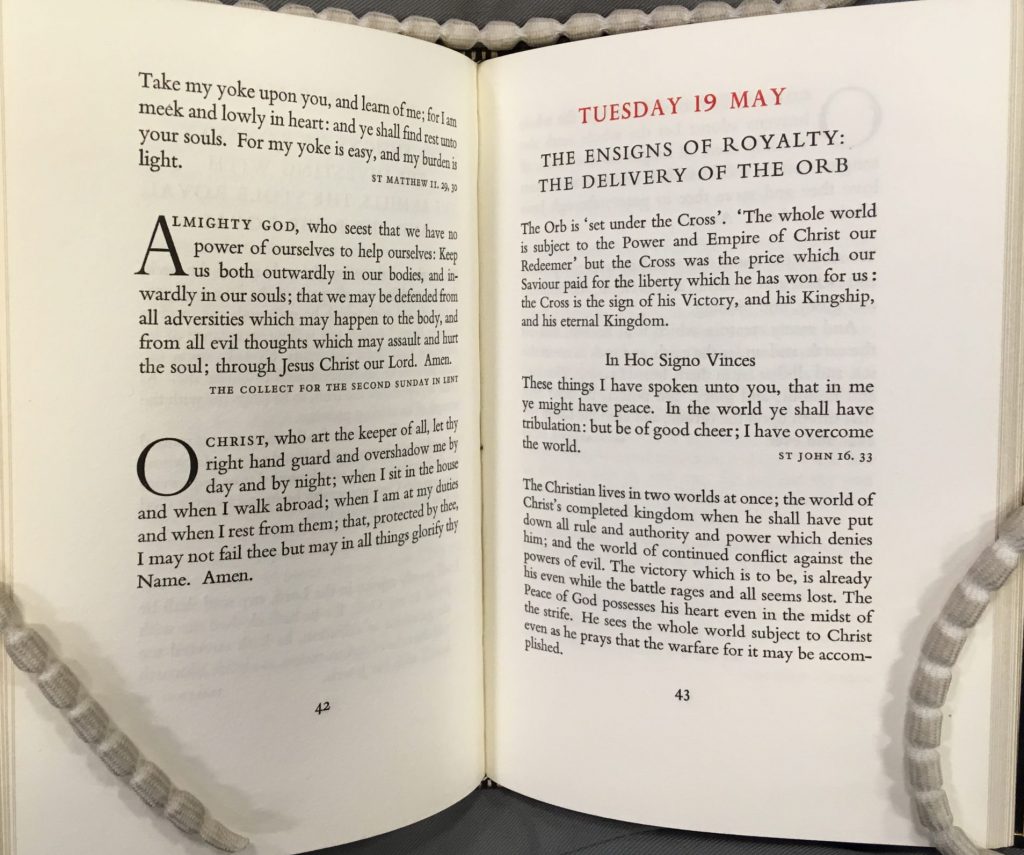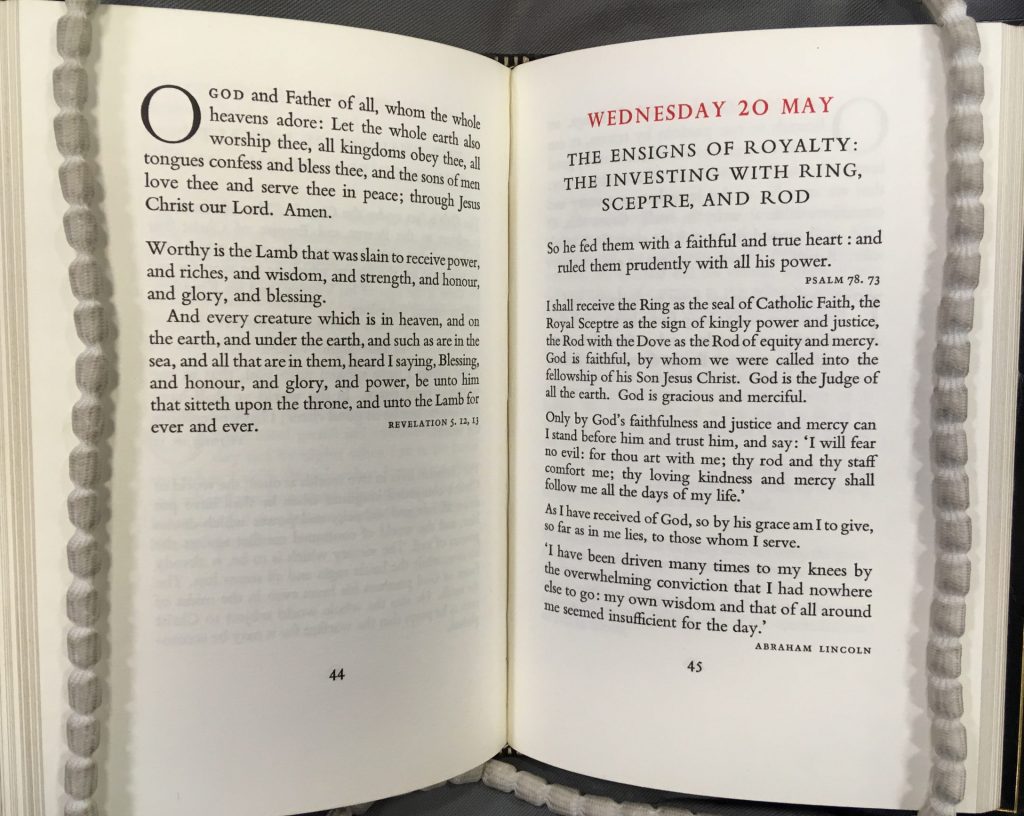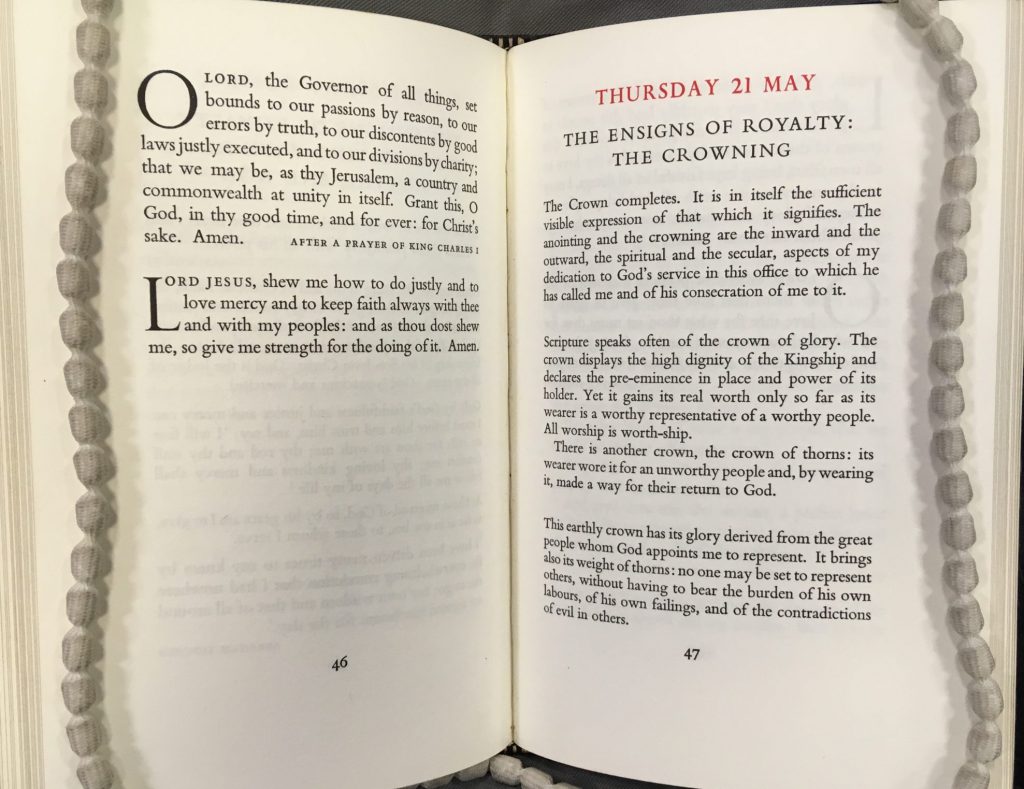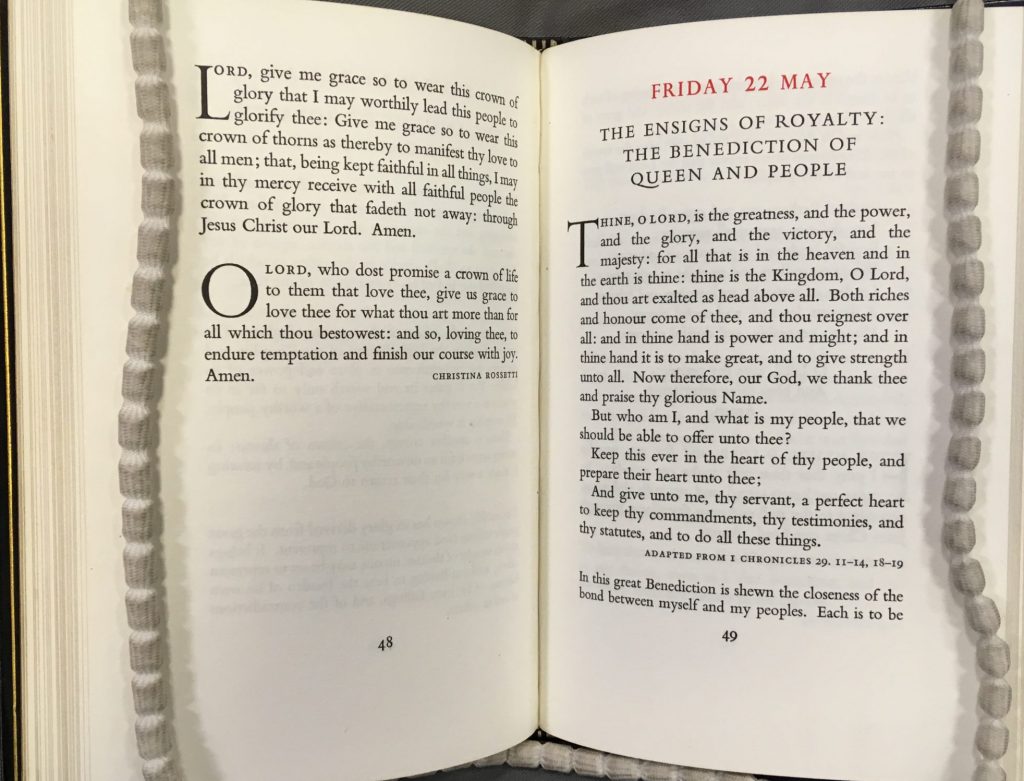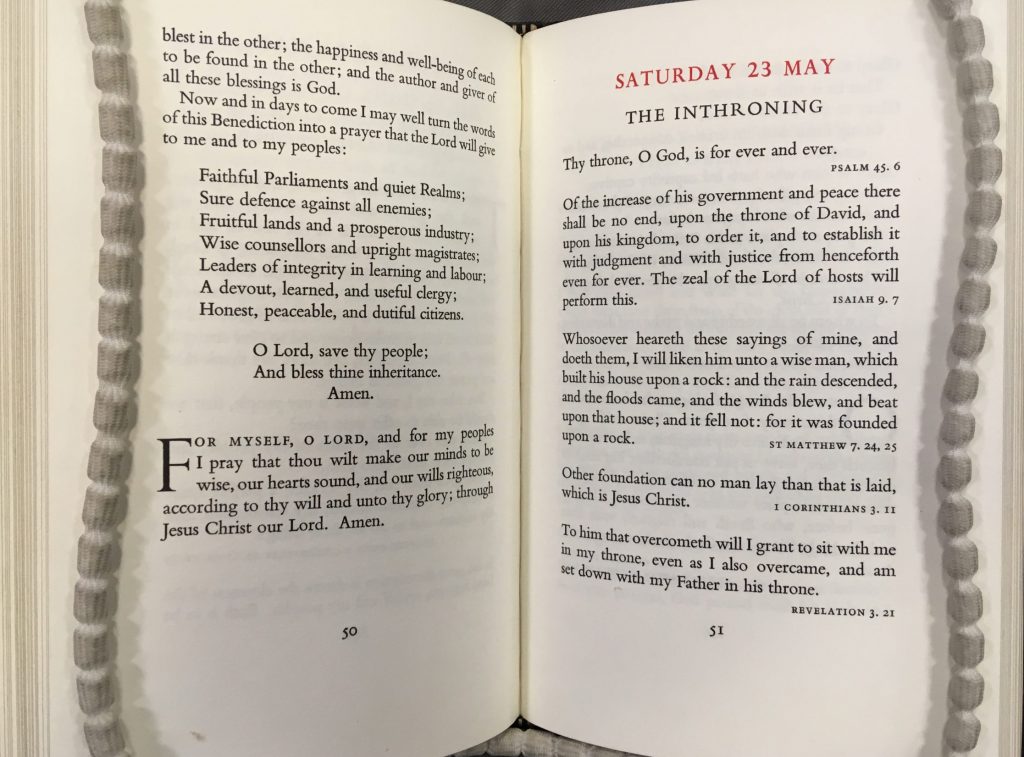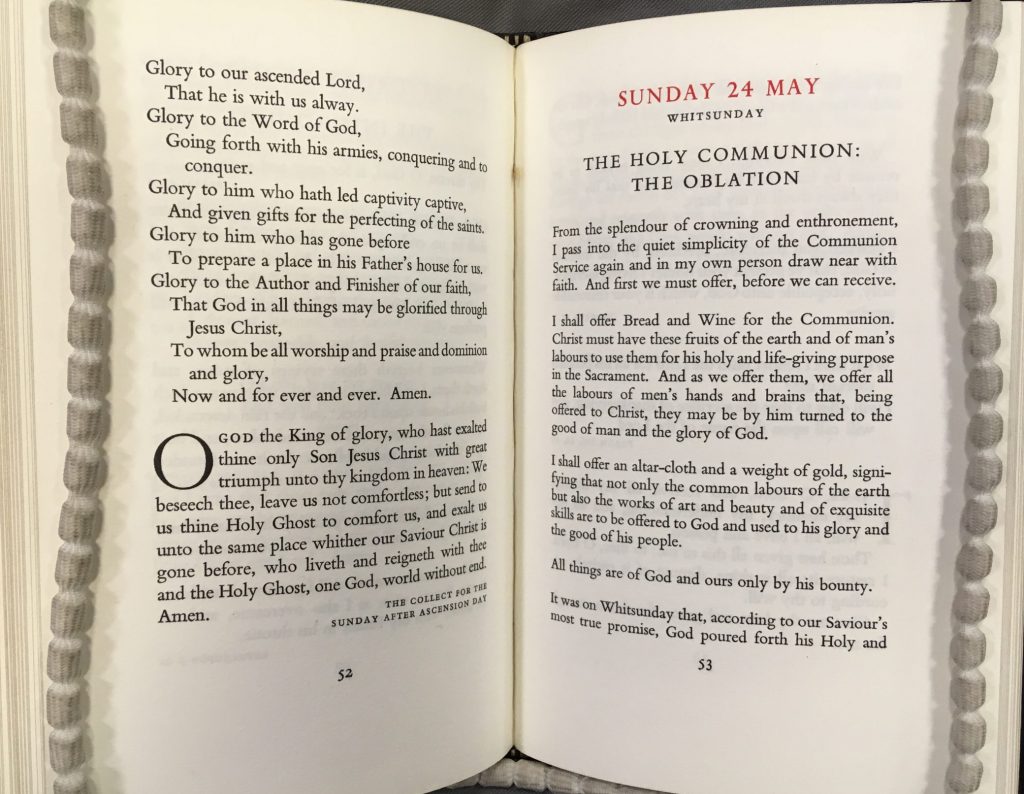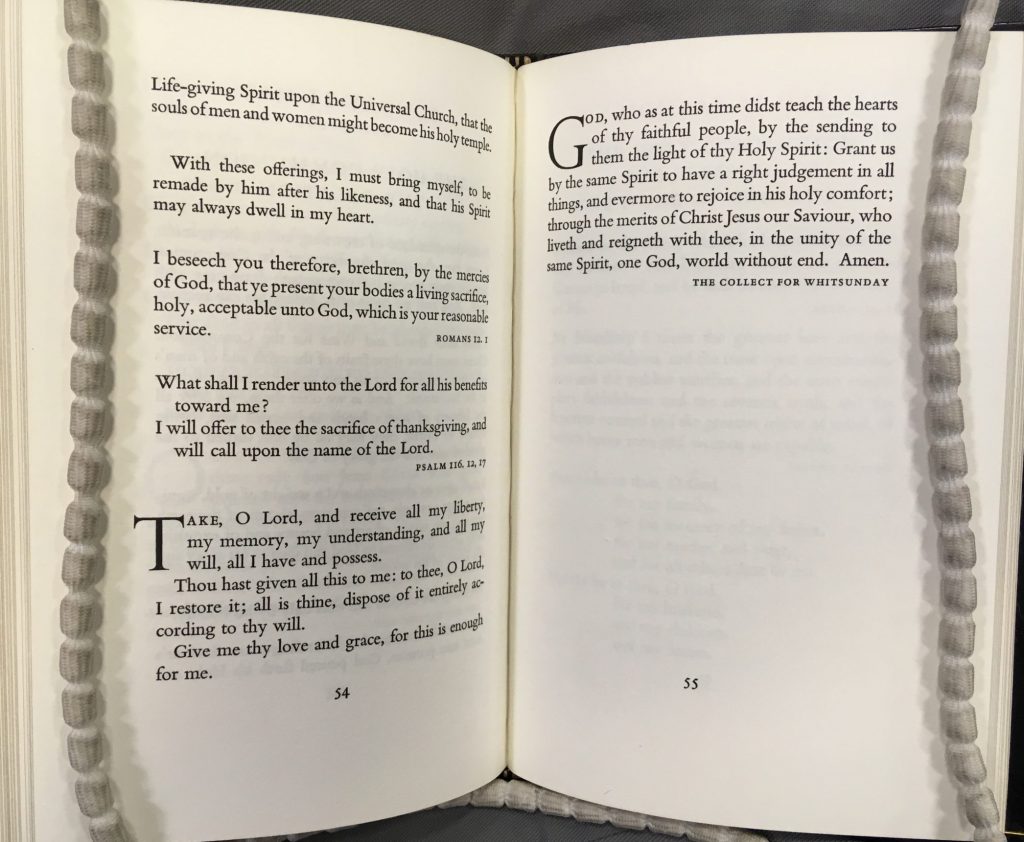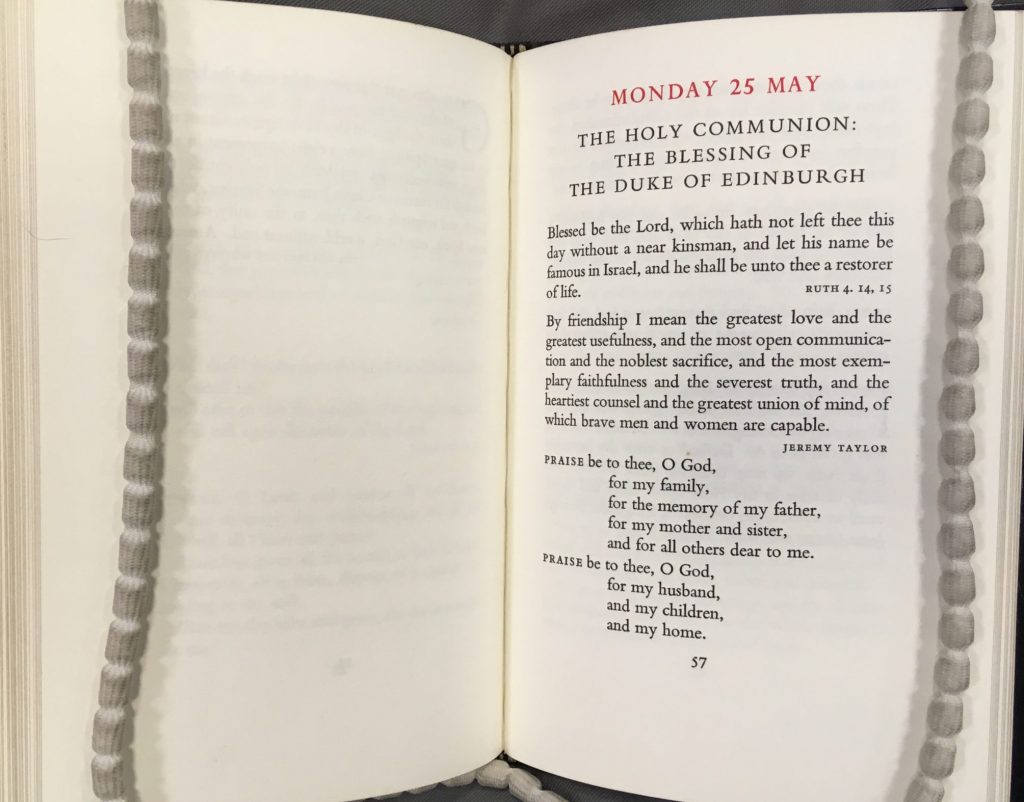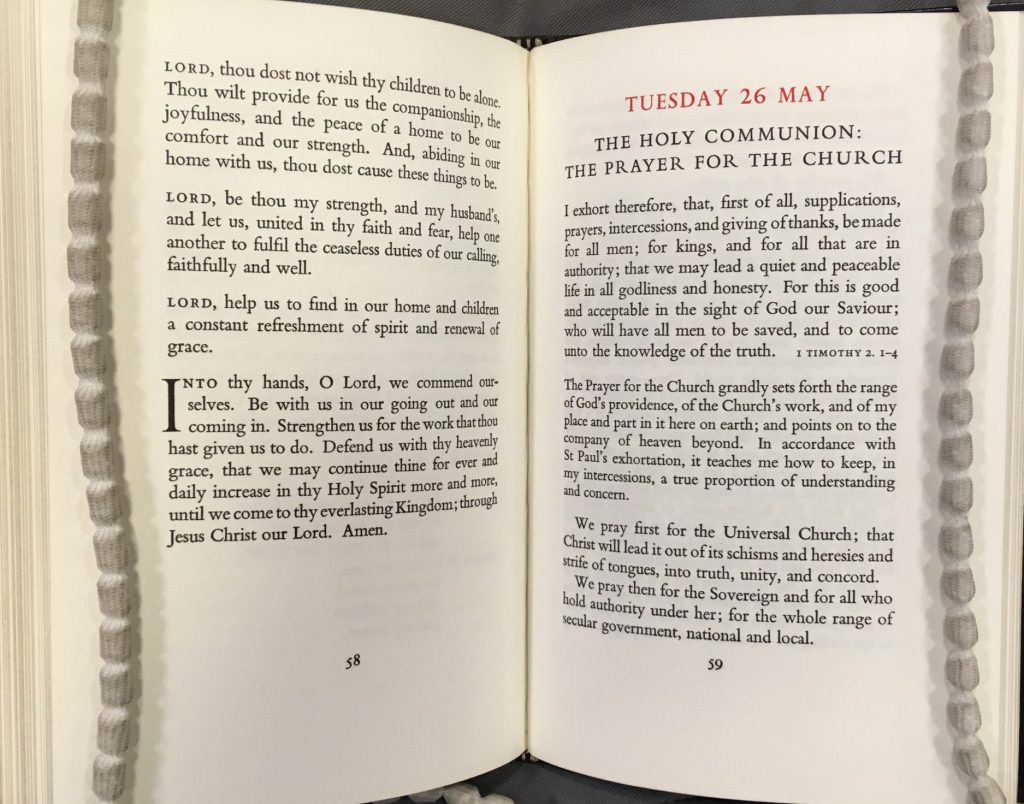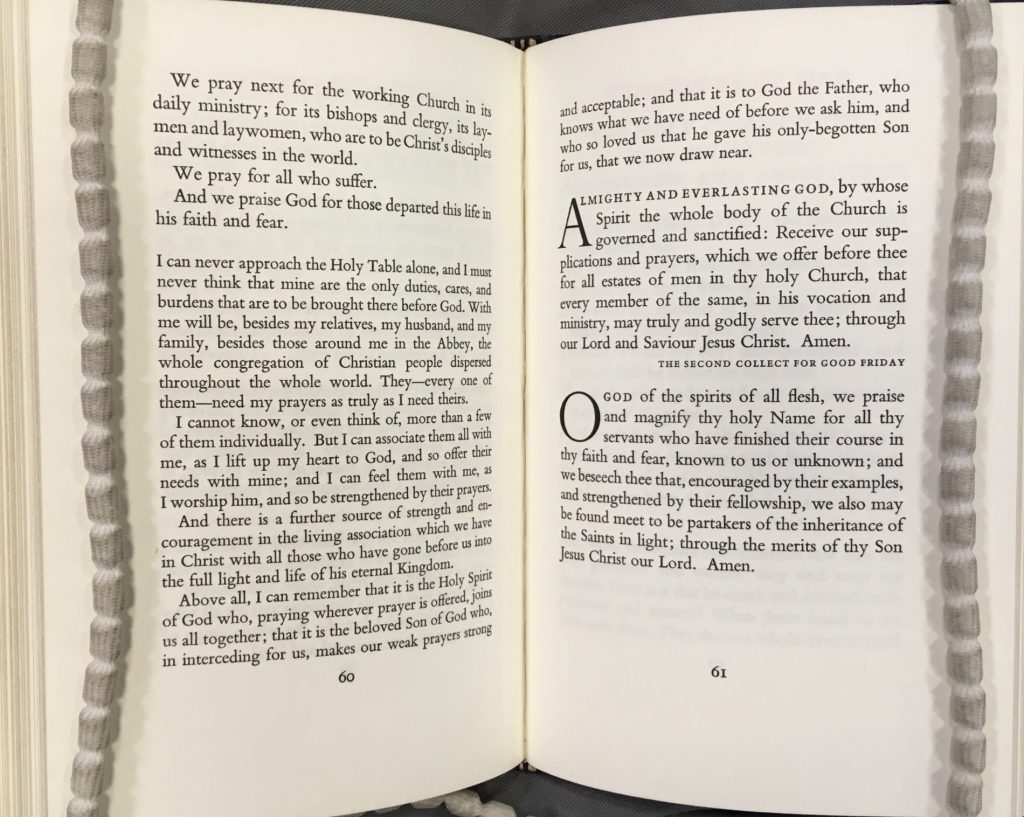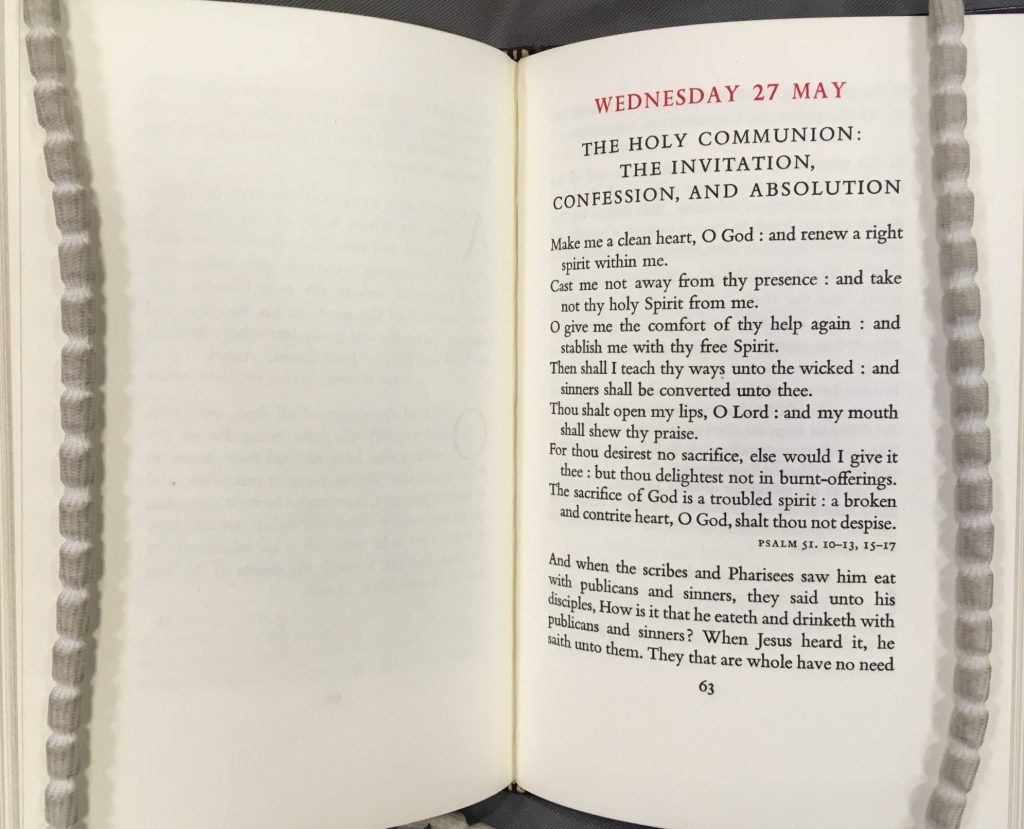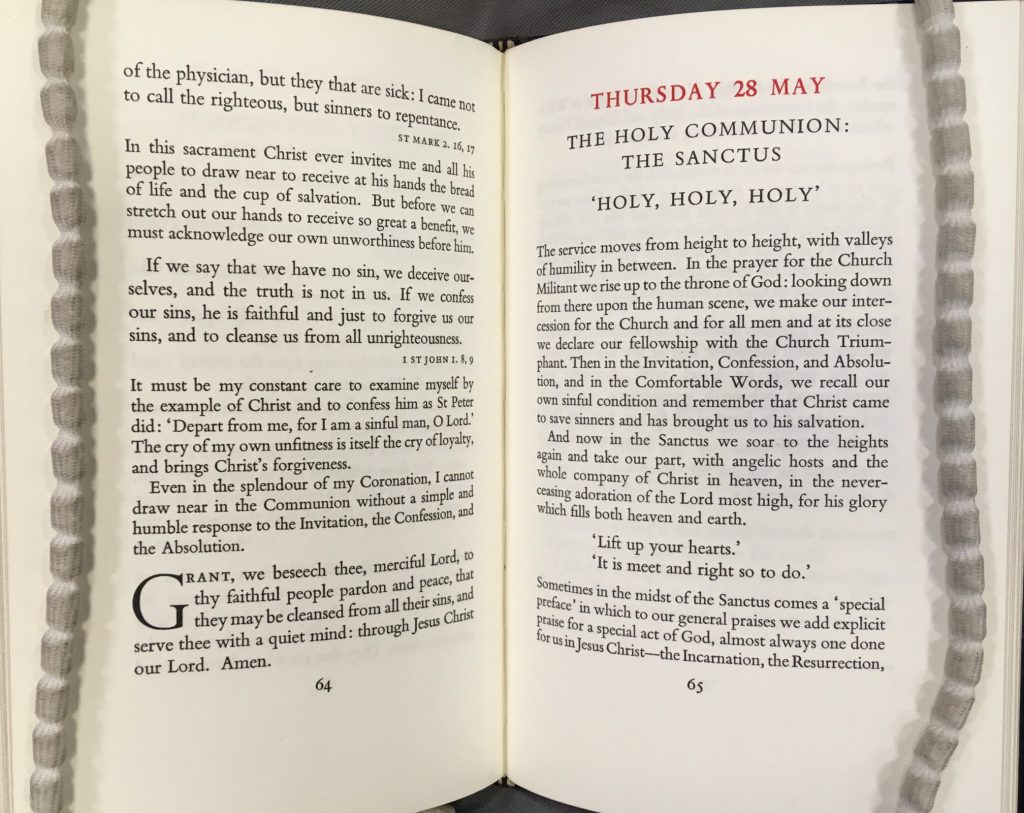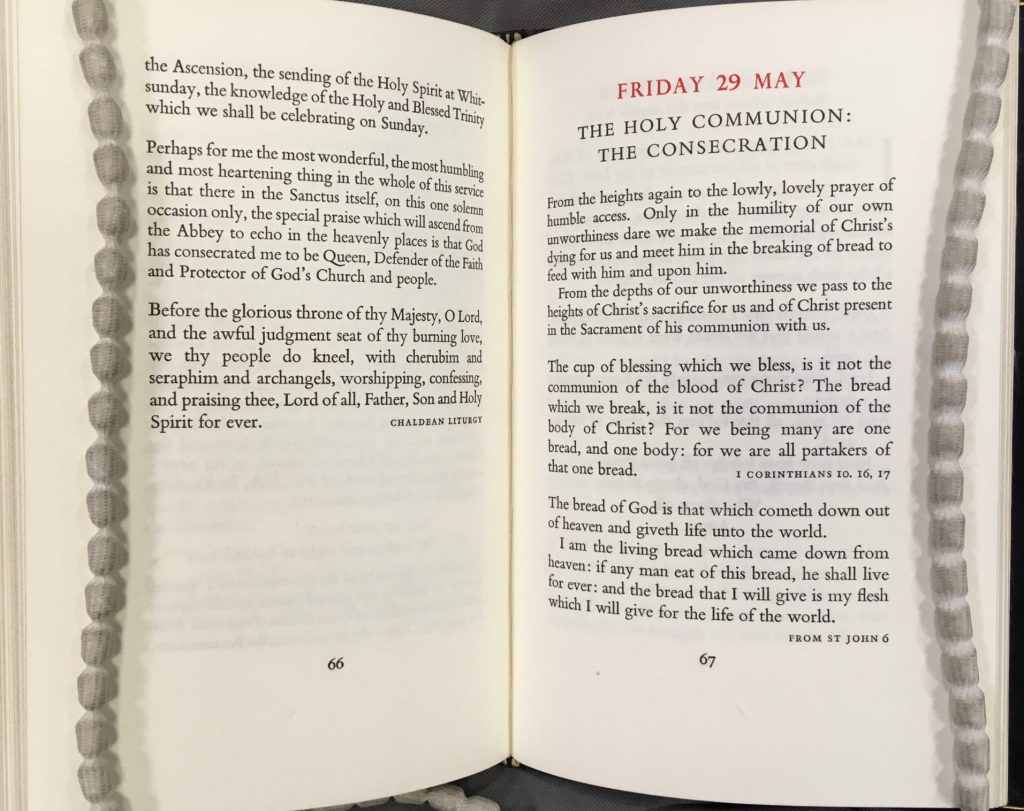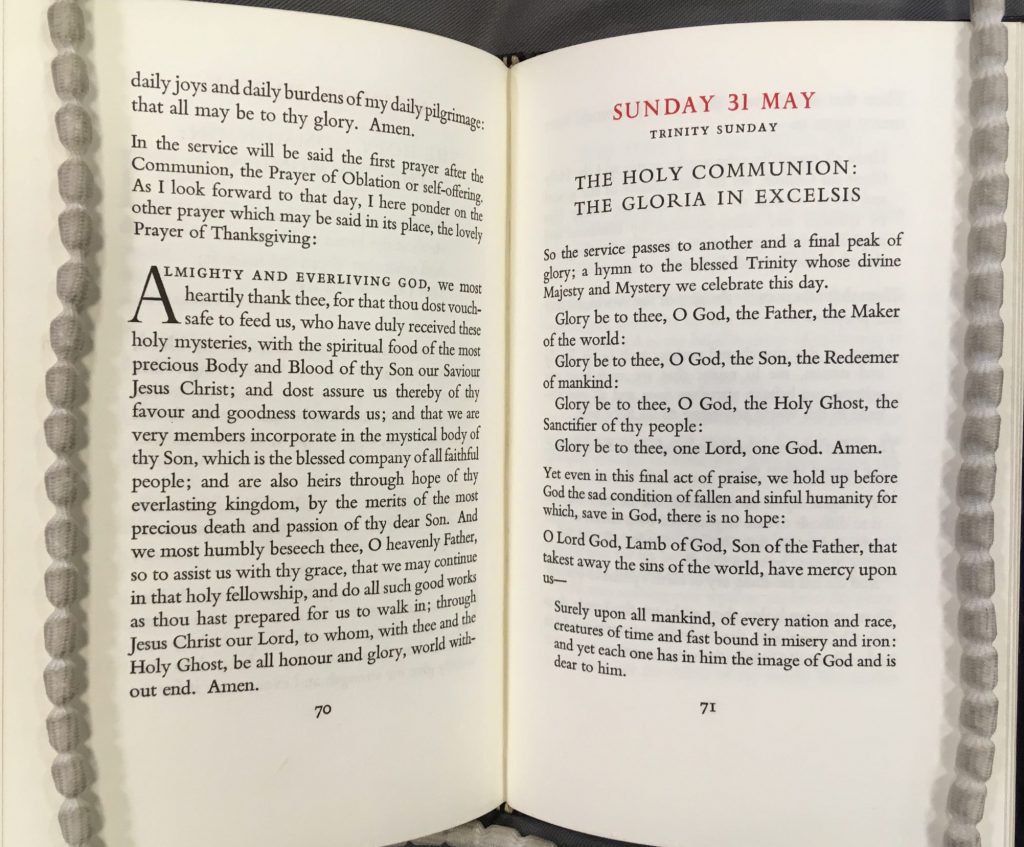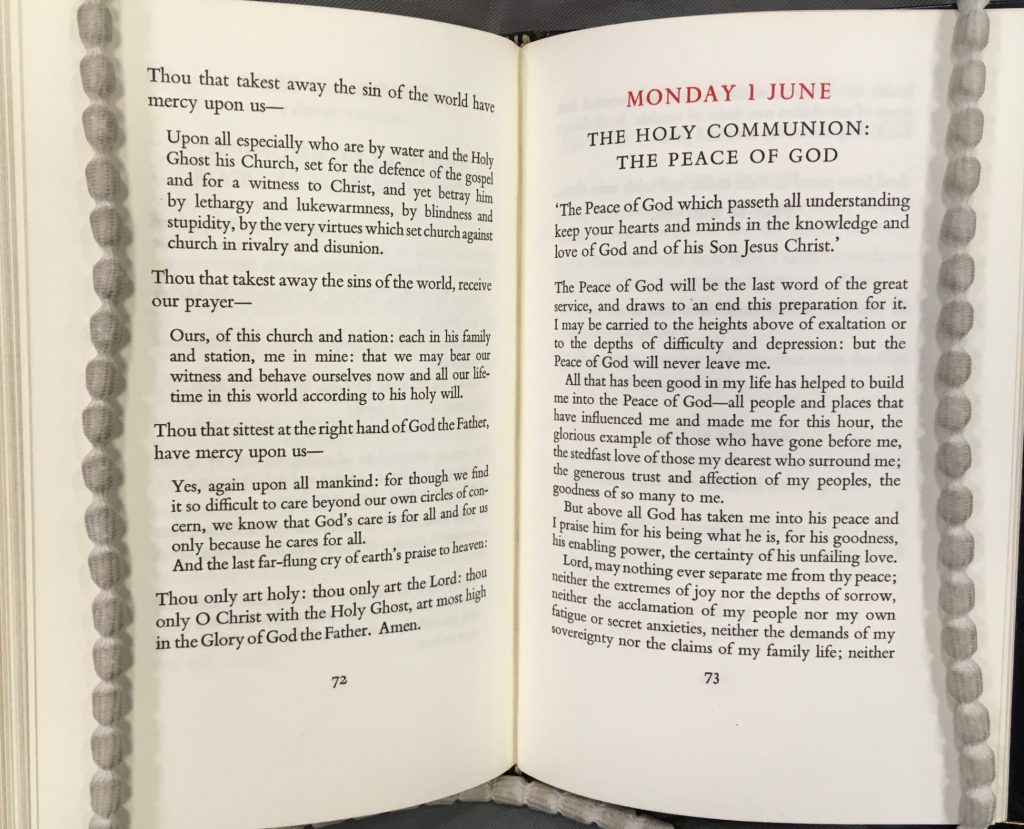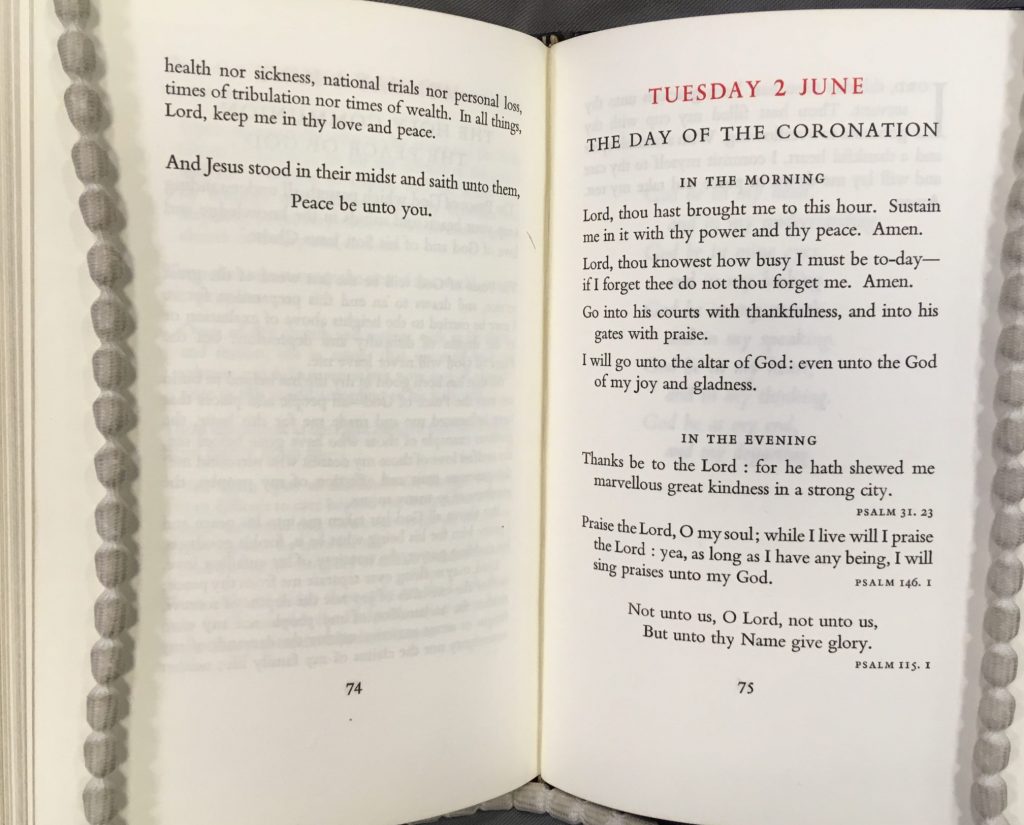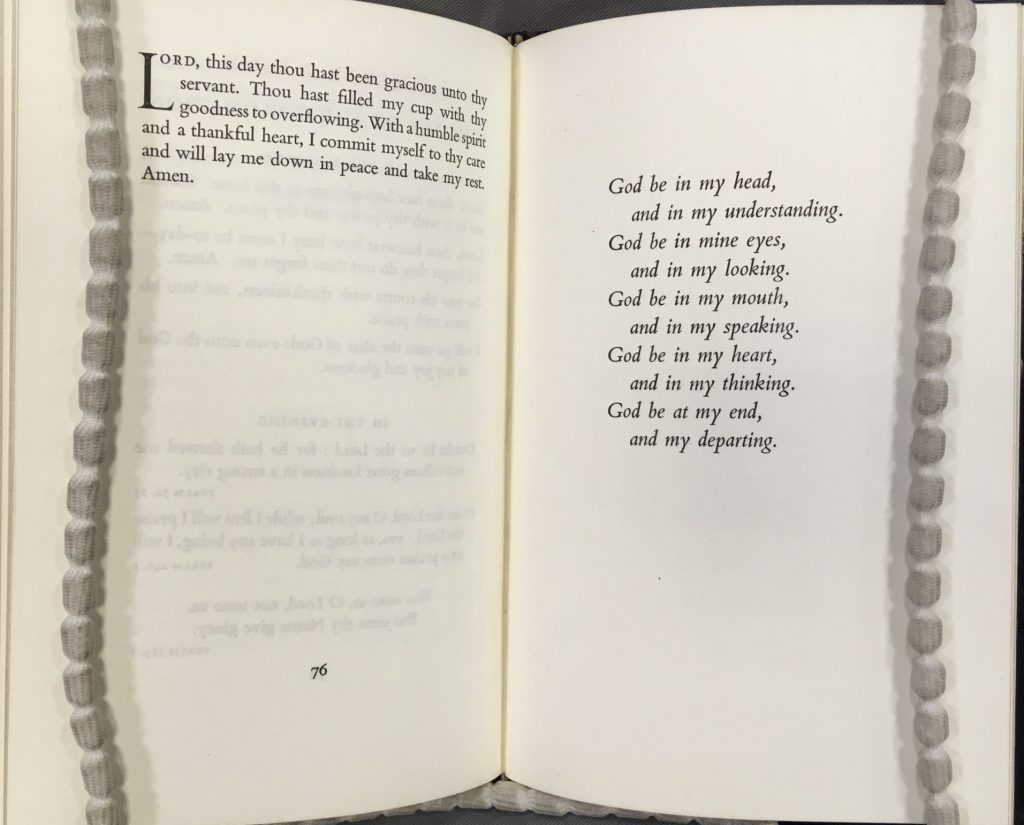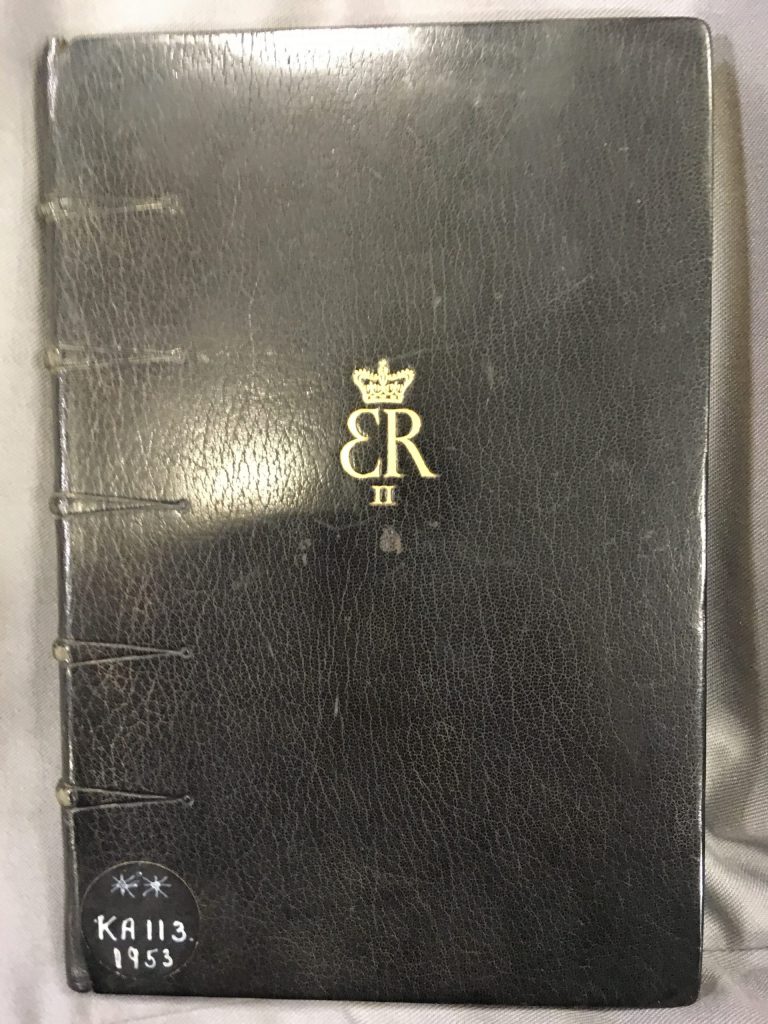For The Queen
For the Coronation of Queen Elizabeth II in June 1953, the Archbishop of Canterbury, Geoffrey Fisher, commissioned a small book of private devotions to be used by the Queen and her close family (the Duke of Edinburgh, Queen Elizabeth the Queen Mother, and Princess Margaret). A very small number of copies was produced, nineteen in total.
The story of its production is told by Brooke Crutchley (printer at the Cambridge University Press, which printed the book), and is appended below the images. The images are photographs of the copy in the library at Lambeth Palace and are not for publication, but for private use only. Click on any image for a larger version.
From To Be A Printer, by Brooke Crutchley, The Bodley Head, 1980. Brooke Crutchley was University Printer at the Cambridge University Press in 1953.
The most rushed job of all, however, was still to come. It is one of the duties of the Archbishop to prepare the monarch for the coronation, but he appeared to have given no particular thought to the matter until about two months before the event. On Easter Monday, which fell on 6 April, his chaplain Dr Eric Jay informed Noel Davey, editorial secretary of the Society for Promoting Christian Knowledge, that His Grace intended to offer the Queen a book of prayers and meditations, based on the component parts of the coronation service and arranged for her use day by day during the month before the ceremony. Would it be possible to get it printed in time?
Davey was spending the Easter holiday in Essex. He rang me at home on the Monday afternoon and arranged to come to Cambridge on the following day. He explained that copy for the book did not yet exist but the Archbishop had charged two religious communities to prepare drafts. He hoped to have it ready in a week’s time and it was essential that the book should be printed and in the Archbishop’s hands before the end of the month. No more than five copies were wanted – for the Queen, the Queen Mother, the Duke of Edinburgh, Princess Margaret and the Archbishop himself. With my assurance that the job could and would be done Davey set off for London, while I discussed the project with the manager of Gray’s, the hand binders off Green Street [in Cambridge]. That same afternoon a letter went off to Davey giving him our proposals. We had thought in terms of large type on a quarto page, but the Archbishop preferred something smaller and more intimate and this is what we eventually produced.
It was the afternoon of 14 April when we were able to collect from the SPCK office the first batch of copy. Composition started next morning and when Davey called at the Press at noon on the following Saturday there was a complete set of proofs awaiting him. He drove off with them to Ashby-de-la-Zouche where the Archbishop was staying. A few days later, when Davey and I called at Lambeth Palace to collect the corrected proofs, we ventured to suggest that a few additional copies should be printed – for national libraries, for our respective organisations, and (this we put forward tentatively) for those persons who had been primarily concerned in seeing the work through. His Grace was pleased to quote from the scriptures: ‘Thou shalt not muzzle the ox,’ he said, ‘that treadeth the corn.’ In the end nineteen copies were printed and bound; the whole work – setting, correcting, printing in red and black, and binding in full morocco – took exactly two weeks.
In his inside account of the organization of the Coronation, When the Queen Was Crowned, Routledge & Kegan Paul, 1976, Brian Barker writes in a chapter on the Archbishop:
The Archbishop felt that there was another aspect of his responsibility – the duty of preparing the Queen for the act of religious dedication which the service involved.
Dr Fisher could preach a very fine sermon on the tenets of the Christian faith. He was not, however, one of those clerics who could easily discuss religion on a personal basis. He would never enquire, so it seemed to me, about the degree of your religious convictions. I think he also felt this personal reserve in relation to what he felt to be his pastoral duty to the Queen. I also believe, from my own observations, that he stood, in the old phrase, somewhat ‘in awe of Majesty’.
At the end of March he went for a holiday in the Peak District. He settled down to prepare a book of devotions for the Queen, which she could read day by day in the month before the Coronation. There was a page for each day, which was related to some aspect of the Coronation liturgy, followed by a short prayer or meditation. It was printed and bound by the Cambridge University Press into a book the size of a church prayer book. He gave a copy to the Queen, and others to the Queen Mother and the Duke of Edinburgh. I heard that he was very content with what he had done.
